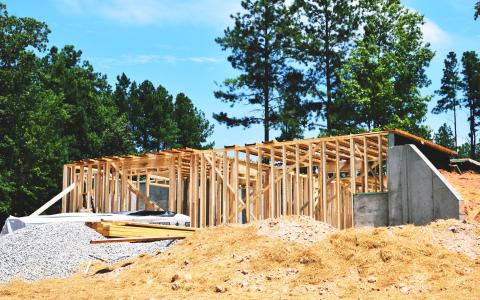
(Yahoo!Finance) - A devastating combination of conditions — hiked mortgage rates, high construction costs, and low inventory levels — has hammered the housing market this year.
"We firmly believe that we're in a housing recession right now,” Jerry Howard, CEO of the National Association of Home Builders, told Yahoo Finance Live (video above), noting that he’s “particularly concerned with the first-time homebuyer quadrant."
The share of first-time homebuyers dipped to 26% from 34% just a year ago, according to the National Association of Realtors, while the average first-time buyer's age has gone up to 36 from 33.
"In the first-time homebuyer market, it's also the fact that cost of construction is still like 10% higher than the inflation rate is," Howard said. "So cost of construction, the cost of capital, it's all playing into it."
Building materials that go into home construction, including lumber, steel products, and ready-mix concrete, had increased by more than 19% year over year in April; and prices for other materials like asphalt and water piping jumped 30% in 2022.
'Different from 2008'
Even though home sales fell for the 10th month in a row last month, Howard said there is a difference between the housing market slowdown today and the one that occurred in 2008.
"The big difference is in 2008 we had a glut of supply," Howard said. "Here, we do not have a glut of supply. In fact, we have a supply shortage."
For instance, unsold inventory of existing homes registered 3.3-month supply at the current sales pace, according to the National Association of Realtors. A 6-month supply is considered a balanced market.
"I don't think people should panic here," Howard said as he explained today's inventory shortage compared with the 2008 market-crash. "And that's going to limit how low prices can drop."
Market recovery
Howard believes the market will begin to recover in early 2024 if the Federal Reserve lowers its short-term benchmark interest rate and the global supply chain gridlock loosens up.
"I think what will lead to that turnaround is going to be a reduction in interest rates," Howard said. "And I think we'll ultimately get our supply chain back in order, which will help bring down construction costs."
Other than monetary policies and construction material logistics, Howard pointed out that changes in government policy can also help tame home unaffordability going forward.
"I also think that policymakers are starting to realize that a lot of the policies we have at the local, state, and federal level are adding to the cost of housing," Howard said. "And I think they're finally going to do something about it."
By Rebecca Chen · Reporter



